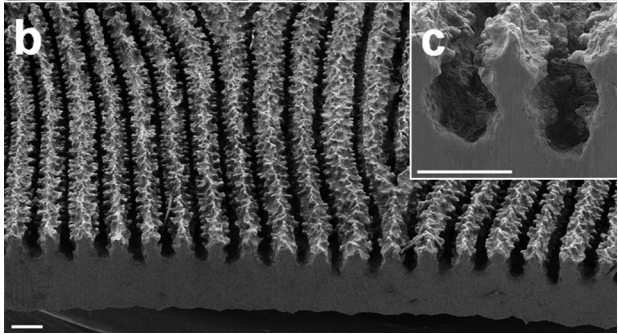The amazing stony coral genus Leptoseris is far from staying out of the spotlight since researchers have just teased out one of its mesophotic tricks. Fort eh longest time scientists including Rich Pyle have worked on projects to investigate how Leptoseris could grow so well beyond 250 feet, and earlier this year some Aussies found the genus living photosynthetically deeper than 400 feet.
While examining deep living Leptoseris colonies and comparing them to shallow water Porites species, Samuel Khang and collaborators noticed a few distinct things about the ‘Leptos’. First of all, they absorbed more light than shallow Porites, and in addition to being chromatically adapted to the spectrum at depths beyond 100 feet, strangely the Leptoseris had a lower density of zooxanthellae. But how could the corals absorb more light with less pigment?

Upon further investigation it was discovered that the skeleton of “L. hawaiiensis,L. scabra and other unidentified Leptoseris spp” have a very regular construction, especially compared to the highly irregular pattern exhibited by Porites. Using fiber optic measurements of reflectance by coral skeletons, the study determined that Leptoseris reflect 300 to 400% less light than Porites. The researchers concluded the following:
“[Leptoseris] coral skeletons may have superior light-trapping properties by virtue of their micro-scale geometry. For deep-water zooxanthellate corals like Leptoseris, this skeletal design likely increases the average path length of light within their tissue to be much greater than that of their shallow-water counterparts thereby enabling superior light harvesting with less pigment per unit area.”
The Leptoseris species that were studied in this research have fairly thin skeletons but it’s not too hard to believe that the design of other species like the Leptoseris mycetoseroides above and others also have skeletal geometries to capture light. We’ve always loved the Leptoseris for their weird skeletal shape but now that there’s a reason to the intricate skeletal patterns we love them even more.




